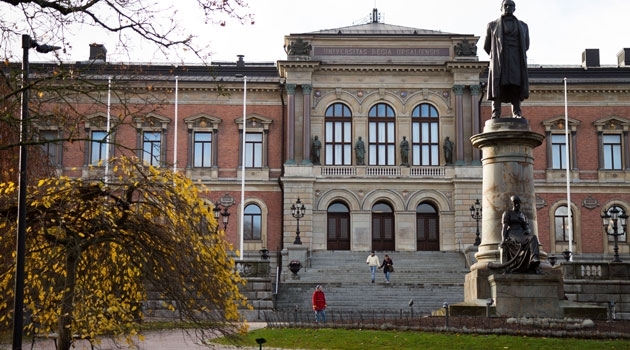Celebrating peace and conflict research in Uppsala
Peace and conflict research first began at Uppsala University 50 years ago. We will be celebrating this anniversary with a symposium in the University Main Building on 14 October. Peter Wallensteen, post-retirement professor of peace and conflict research, has been involved since the start.
The Department of Peace and Conflict Research was established by the Faculty of Social Sciences in 1971. At that time, there was already a seminar on the subject at Kursverksamheten (now Folkuniversitetet). The programme was transferred to Uppsala University through the efforts of a group advocating peace research at Sweden’s universities.
peace and conflict research. Photo: David Naylor
The Swedish government established three postdoctoral research fellowships, one each in Uppsala, Gothenburg and Lund. Peter Wallensteen became a postdoctoral research fellow and head of the department in Uppsala. At the time, the subject was completely new at the University and in Sweden.
“The Stockholm International Peace Research Institute (SIPRI) already existed, but in a study by Alva Myrdal urged the universities to play a role in peace and disarmament. She encouraged us to get involved in research and education,” says Peter Wallensteen.
Rapid development
Progress has come quickly since then. Ten years after the start, in 1981, the Swedish Parliament established the Dag Hammarskjöld professorship, a position Peter Wallensteen held staring in January 1985. A year later doctoral studies began. Since then, more than 50 doctorates have been awarded and the department currently has more than 80 staff members.
“For the department to develop, it was important that it be established as a separate interdisciplinary environment instead of a unit within one of the social sciences, such as political science,” says Wallensteen.
How has the research contributed to society?
“We have made peace a subject that can be researched. It is through research, not opinions and ideologies, that we can find out what really works and what does not work. If leaders want peace, this gives them a way of thinking about what they can do.”
Important to have methodical approach
Wallensteen emphasizes that it is important to distinguish between personal enthusiasm and research.
“Regardless of what we think, the research should be conducted using scientific methods. We have been careful to use established methods and to be transparent. We train students to review sources and think methodically.”
The focus of the subject has changed over the years. In the 1970s and 1980s, research focused on disarmament and nuclear weapons. Now it deals more with mediation, negotiation and what is required for peace after war.
“Many specialise in certain countries, and the research has shifted to dealing with issues within countries afflicted by conflicts. Research is also being done on issues related to climate, gender and, in the future, perhaps also health.”
Data on world conflicts
Internationally, the department is perhaps best known for its conflict database, which contains data on all the world’s conflicts. Peter Wallensteen and his colleagues began collecting data in the 1970s, when they listened to British Broadcasting Corporation’s nightly broadcasts and discovered that there were many conflicts not covered by the media.
“It’s amazing to see how the database has evolved into an international resource used by researchers around the world. It’s gratifying to see that it has become so useful. The database includes not only data about conflicts, but also how they are resolved.”
Another distinctive characteristic of the department is the good contacts it has developed with the Swedish Ministry of Foreign Affairs and governmental contacts, thanks in part to the annual Dag Hammarskjöld lectures to which internationally recognized individuals are invited.
“Our important contacts include Jan Eliasson, one of the speakers at the symposium on 14 October. Sweden’s Crown Princess Victoria, one of our former students, also will be participating in the symposium. She keeps in touch from time to time and is very committed,” says Wallensteen.
A positive atmosphere
When he started as director of the peace and conflict study programme in Uppsala, he was inspired by the Peace Research Institute Oslo, which brought together researchers from the Nordic countries.
“I attended as a student for a semester and saw an environment that was very stimulating and enriching. I wanted to have good collaborations among colleagues, where everyone helps each other and to create a positive atmosphere. And I think that attitude persists. This helps explain why so many people want to attend and contribute.”
Annica Hulth
Livesreamed anniversary symposium
In 1971, the Department of Peace and Conflict Research was established at
Uppsala University. This year the department is celebrating 50 years of teaching
and researching peace and conflict with an anniversary symposium. The event will be hybrid in format and will take place in Uppsala University Grand Auditorium as well as being livestreamed. If you are located in Uppsala, you can reserve a seat in the Grand Auditorium.

